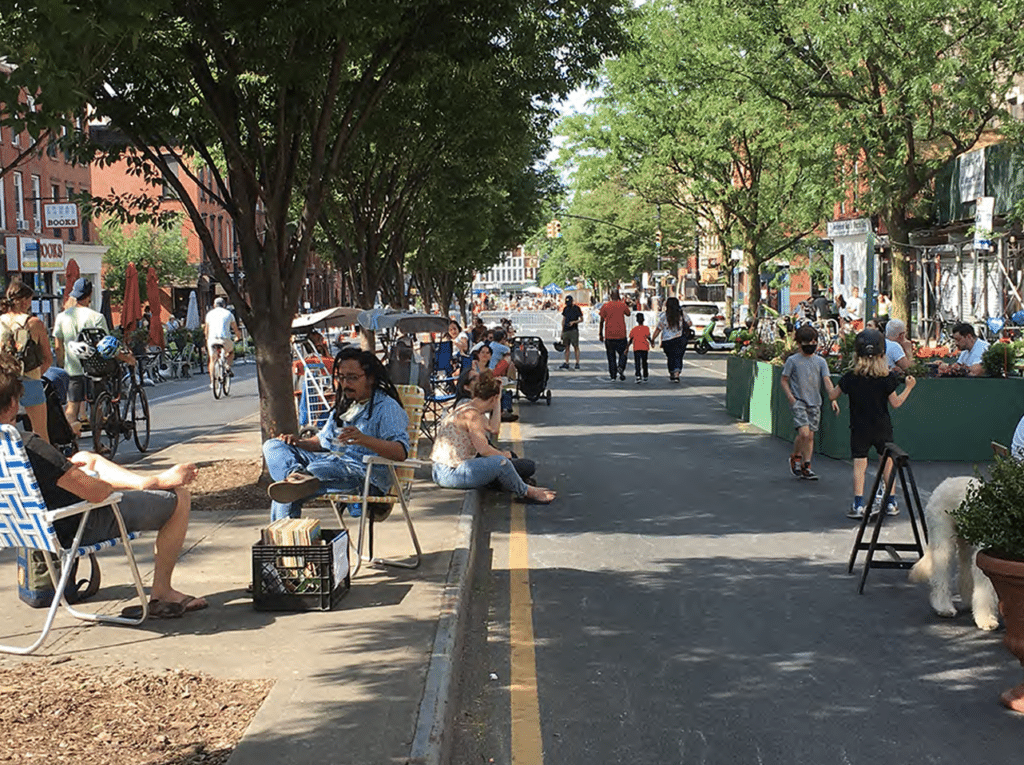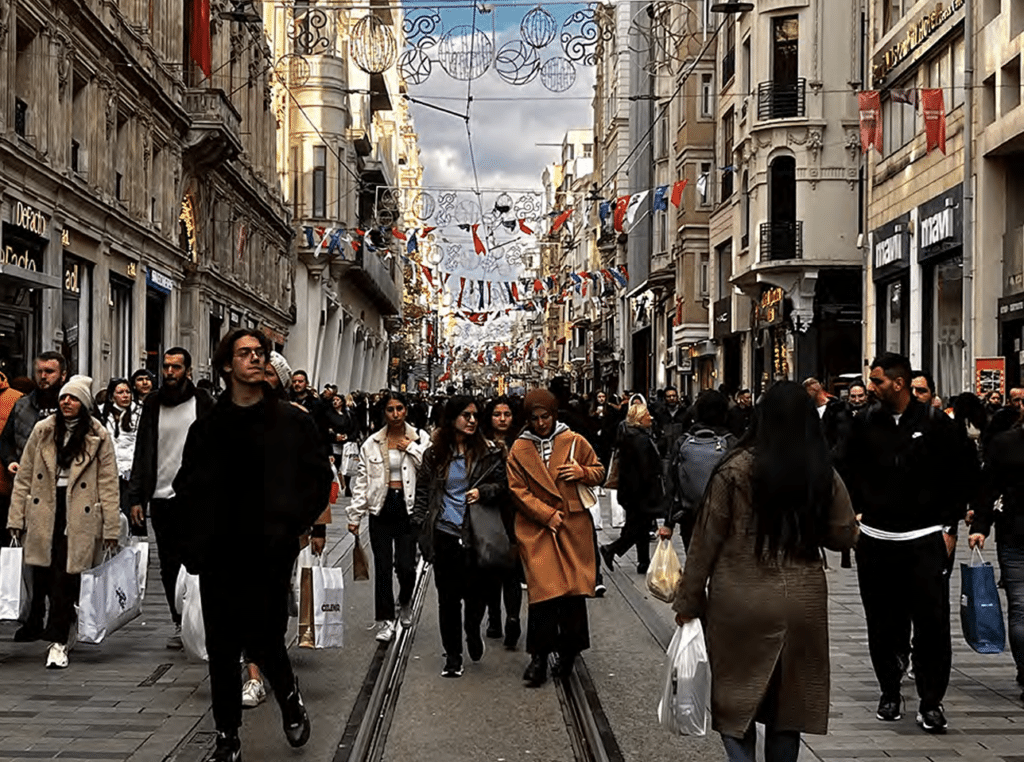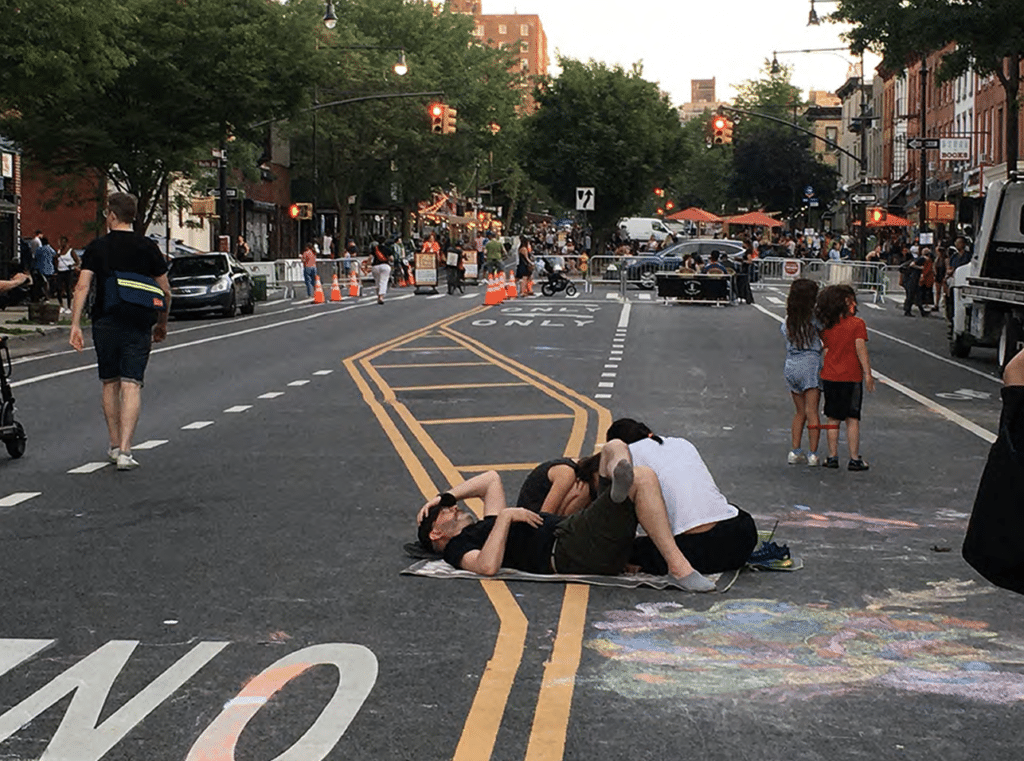Alison B. Snyder
Pratt Institute, Brooklyn, New York
asnyder@pratt.edu
Introduction
During the start of the pandemic, what were initially characterized as personal emotions and actions, became known as societal issues. Disbelief about the magnitude of the virus, trepidation about sickness and being near people, the quick lack of typical freedoms, and concerns about how to fill time, have also been jumbled with considering optimistic possibilities for new ways of working and living in the present. Anthropologist Shannon Mattern summed up hers and others’ opinions about the pandemic period reporting it is a: “’fertile suspension’ that opened up ‘bountiful space and time for deeper wakefulness.’”1 Yet, social critic Kyle Chayka wrote more cynically that “mass quarantine has represented a final fulfillment of the pursuit of nothingness,” since normal activities and indulgences were suspended.2 This author considered ongoing developments during the pandemic by writing, “The pause enabled a kind of breather – a slowing down that gave space for us all to become eyewitnesses to this era, pondering how to renavigate daily life, including assessing personal and collective moralities.”3
This paper focuses on how the urban street acts as a prime public haven for providing the space to motivate different individual and communal behaviors that activate spiritual or transformative immersive experiences within the mundane. Whether consciously or unconsciously recognized, the obvious ubiquity of street space began to appear and feel different during the start and height of the pandemic. Streets offered not only immediate air and open space, but spaces of reprieve and salvation. People took themselves outside to be alone, or to try to carefully experience life with others. As lockdowns lifted and vaccinations became more prevalent, different actions and interests increased.4
City municipalities quickly became aware of people’s mental and physical needs, as well as specific concerns for urban economies, since many were staying home. Their new ideas to make opportunities for encouraging street use by increased pedestrianization, and allowing food-related vendors to expand their business by creating exterior on-the-street open-air-structures, immediately took root. New York City was a trailblazer in these seemingly temporary movements—but they have proven to be resilient and transformative. At this point just past the third year of the worldwide lock down in March 2020, the reality or illusion that we are ”post- pandemic,” provides the chance and opportunity to recognize that inhabiting the street has the capability to alter oneself or transcend the norm through subtle and more demonstrative actions, if only momentarily. Perhaps entering of the streets (whether pre, during or post-pandemic times) must be considered through the lens of body and mind, identifying people’s movements as naturally quotidian and also poetic. Art Historian David Hopkins writes, “the Surrealists systematically allowed the city to penetrate their psyches, ” thus, pinpointing a kind of interiority within the external and a psychic necessity of chance.5
The subjects of a short comparative case-study will expose two different scales of pedestrianized urban environments in dense global cities that boldly invite a diverse population with disparate behaviors. Vanderbilt Avenue in the center of Prospect Heights, Brooklyn, New York City; and, Istiklal Caddesi (Avenue) in the center of Beyoğlu, Istanbul, Turkiye provide extremely different contexts and conditions for experiencing both separate and collective ordinary realizations, as well as some similar extra-ordinary states of being. To illustrate how these avenues attract and and allow what this author refers to as spiritual meandering, a series of urban narratives with still and moving visual illustrations explain the examples of altered states of being.

Fig 1. Immersed in the feeling of the multi use of Vanderbilt Avenue, 2021. (photo copyright, Alison B. Snyder)

Fig 2. Immersed in the feeling of the crowd in the middle of istiklal Caddesi, 2023. (photo copyright, Alison B. Snyder)
Speculations on Spiritual or Altered States
Looking at the Oxford English Dictionary to understand the meaning of “spiritual,”6 it appears that the definitions discern between practical and mundane needs, along with bodily sensing; versus, an attention towards intellectual judgement, or morality, and an awareness that the human soul is not defined, controlled or explained by sequential temporality. With regard to inhabiting the urban built environment, we must then ask: Can constructed or designed conditions provide a motivating backdrop for developing not only less usual corporeal actions, but also potential to activate understandings beyond the tangible? And, being given the time and space for contemplating and manifesting personal and collective possibilities (possibly driven by the pandemic era), what might conditions allow recognition of a so-called set of spiritual realizations in the city?
It is concerning to oversimplify or try to define how exactly the spiritual might occupy daily life. To suggest that a distinct set of separate or integrated experiences resulting from occupying the city street will activate the human soul, is also problematic. With little written on how spiritual attitudes or attainment might occur on streets—many address a variety of perceptions through sound, smell and vision, while touching on the intentional meditative aspects of walking as a ritual, much like hiking, but perhaps with different pursuits. Seeking and navigating urban street space, some report they experience an altered state easier if they know where they are, thus returning to a place again and again provides an ability to sense and potentially be transported. While others achieve a transcendent state less consciously if they can wander, experimenting with the unknown and even reveling in getting lost. Walking, then, is a kind of practice.7 Guy Debord, the Situationist, put forth notions of exploring streets through what he called the dérive, or drift, to capture urban character. This was done by taking note of one’s “psychogeographical” awareness and performing a dériveby guiding themselves in a semi-aimless method while on the city streets to allow for recording the unexpected through descriptive writing and sketching.8 Mary Beath, a poet and ex-New Yorker, writes that walking in general allows “a shift in inner attention.” While one needs to often walk in large cities such as New York City or Istanbul “with intention” one also finds themselves in a kind of “communal solitude.”9 Indeed, geographer Edward Soja also speaks of a shared spatial consciousness.10 Other methods for observing city inhabitants to understand their psyche with regard to social activities and a sense of identity is by considering Walter Benjamin’s critiques, done as the Parisien flâneur.11 While Benjamin’s working method may not be called spiritual, his work is influential, along with the other author’s methods for probing and describing the less tangible elements of immersing oneself in city streets, as spiritual meandering.
On-site research took place in Brooklyn primarily between 2021-2023, and in Istanbul many years of working in the city allowed for focused attention on summer 2019 pre-Covid, and fall/winter 2022-spring 2023. Vanderbilt’s partial pedestrianization is only a few years new, but its six blocks (.3 miles) offer a diverse set of options. The surrounding buildings span approximately the last 90 years and are largely low-rise masonry commercial with residential structures. Vanderbilt is split by a segmented raised island which offers different sedentary or active options to traverse, mix into or view people in immediate and intimate ways. Many opt to be near others very close to the street surface. Istiklal runs .7 miles and is surrounded by a large range of stately mid-rise multi- use structures mostly spanning the last 130 years, but with interspersed ancient religious structures. There are several crossing zones where cars can invade, but mostly people stroll from end to end as the crowd ebbs and flows throughout the day and night. There is no room to sit or linger, except at some edges of the avenue or the entries to many side streets or internal passage buildings. Though very different, both avenues contain a pride of place, embodying a history and recognition of diversity.

Fig 3. Immersed in the feeling of refuge and freedom provided on Vanderbilt Avenue, 2021. (photo copyright, Alison B. Snyder)

Fig 4. Immersed in the feeling of refuge and freedom provided at night on Istiklal Caddesi, 2023. (photo copyright, Alison B. Snyder)
This author’s site observation, participation and local interviewing on both avenues was influenced by the notion of watching and recording with intention, yet being open to surprise. As observed or reported by others, spiritual meandering occurs naturally in both locales—the freedom to become a nonconformist, alone or as part of the collective, is a constant draw. An altered state of being may be dependent on discovering the literal and figural liminal conditions that create separation for contemplating, identifying, and augmenting the immersion.12 Along Vanderbilt or Istiklal, there are several kinds of repeated known or serendipitous experiences available. These choices include: moving into a crowd for the sake of unknown encounters, and to experience aspects of intensity, festivity, and mystery, whether day or night. Share outside experiences with people known and unknown; sitting in public view in the middle or on the edge of the avenue, or taking refuge in the anonymity, also expresses unusual partaking of freedoms, whether knowingly surveilled or not. Though expressed in distinctively different ways, there are surprising similarities of spiritual meandering in Brooklyn and Istanbul. In both pedestrian crowd immersion is invited and sustained through an aura of open-ness, freedom and acceptance of all people. New and continued cultural patterns of use have evolved showing how individuals are willing to reinterpret or recompose themselves—separately or in group communion—through urban avenue spaces.
1 Sharon Mattern. “How to map nothing,” Places Journal (March 2021).
2 Kyle Chayka. “How the coronavirus will reshape architecture,” The New Yorker, 17 June 2020. Accessed 4 March 2021. https://www.newyorker.com/culture/dept-of-design/how-the-coronavirus-will- reshape-architecture.
3 Alison B. Snyder. “The designed and the ad hoc: dynamic remakings of street space in New York City,” Architecture_MPS23(1) (2022): 2. DOI: https://doi.org/10.14324/111.444.amps.2022v23i1.002.
4 Ibid., 1-21.
5 David Hopkins, Dada and Surrealism: a very short introduction. Oxford: Oxford University Press, 2004, 60.
6 OxfordEnglishDictionary, s.v. “Spiritual, adj.” Accessed April 1, 2023, https://www-oed- com.ezproxy.pratt.edu/view/Entry/186900?redirectedFrom=spiritual#eid
7 Ben Jacks, “Walking the City: Manhattan Projects,” PlacesJournal, 18(1) (2006).
8 Guy Debord, “Theory of the dérive,” Situationist International Anthology, edited by Ken Knabb, 62–6. Berkeley: Bureau of Public Secrets, 1958/1981.
9 Mary Beath, Hiking Alone, Trails Out, Trails Home. Albuquerque: University of New Mexico Press, 2008, 58, 57, 56.
10 Edward W. Soja, “Thirdspace: Expanding the Scope of the Geographical Imagination,” Architecturally Speaking: Practices of Art, Architecture and the Everyday, edited by Alan Read, New York: Routledge, 2000.
11 Walter Benjamin, Passagewerken / The Arcades Project. Cambridge: Harvard University, 1940, 1999. Benjamin adopted Baudelaire’s concept of the flâneur.
12 Stavros Stavrides, Towards the City of Thresholds. Athens: Professional Dreamers, 2010.



